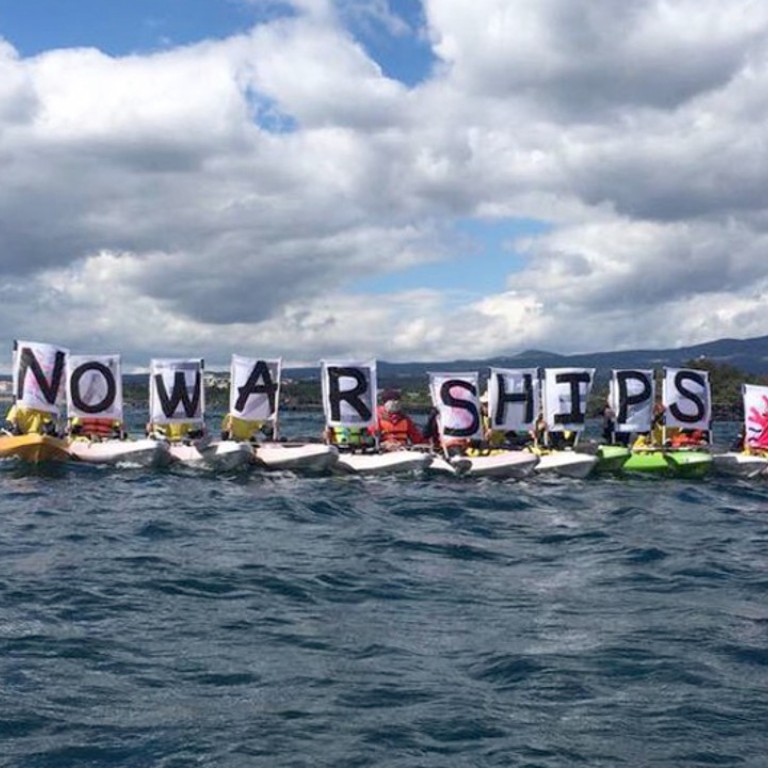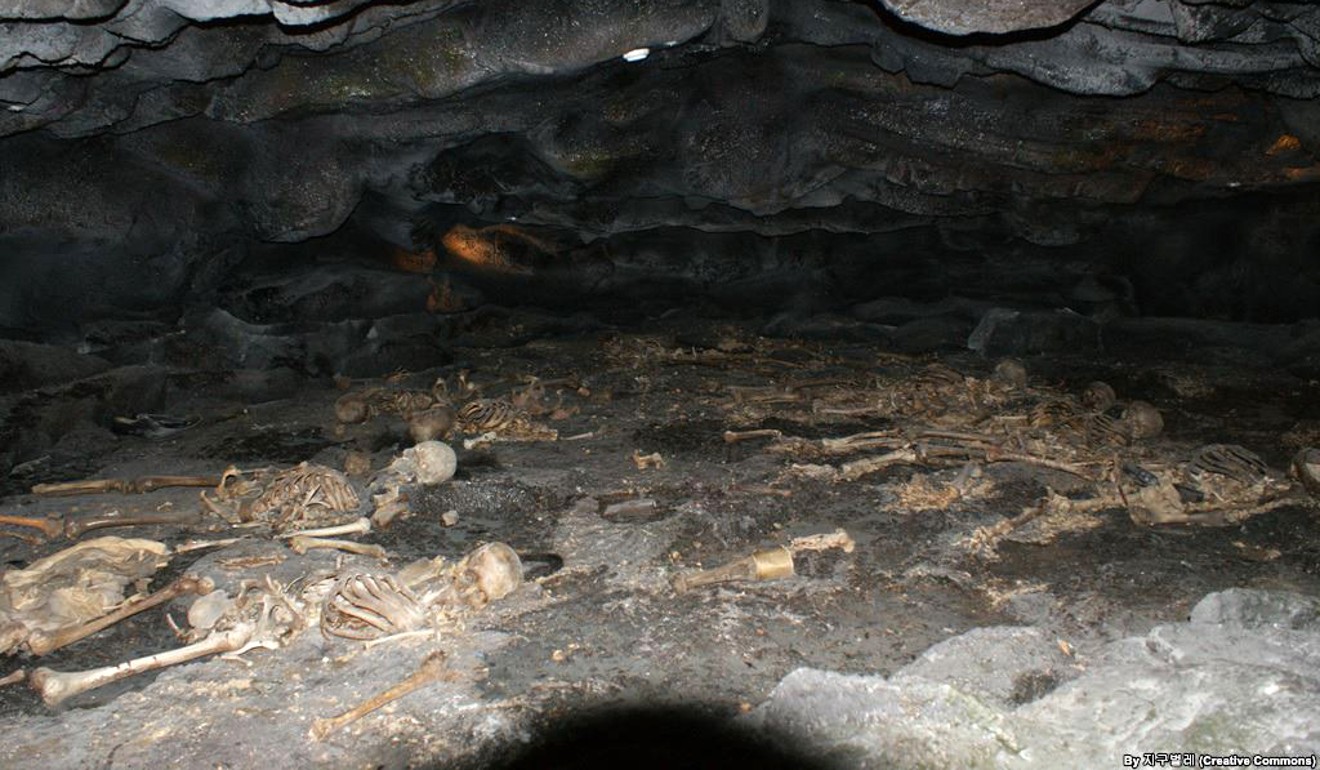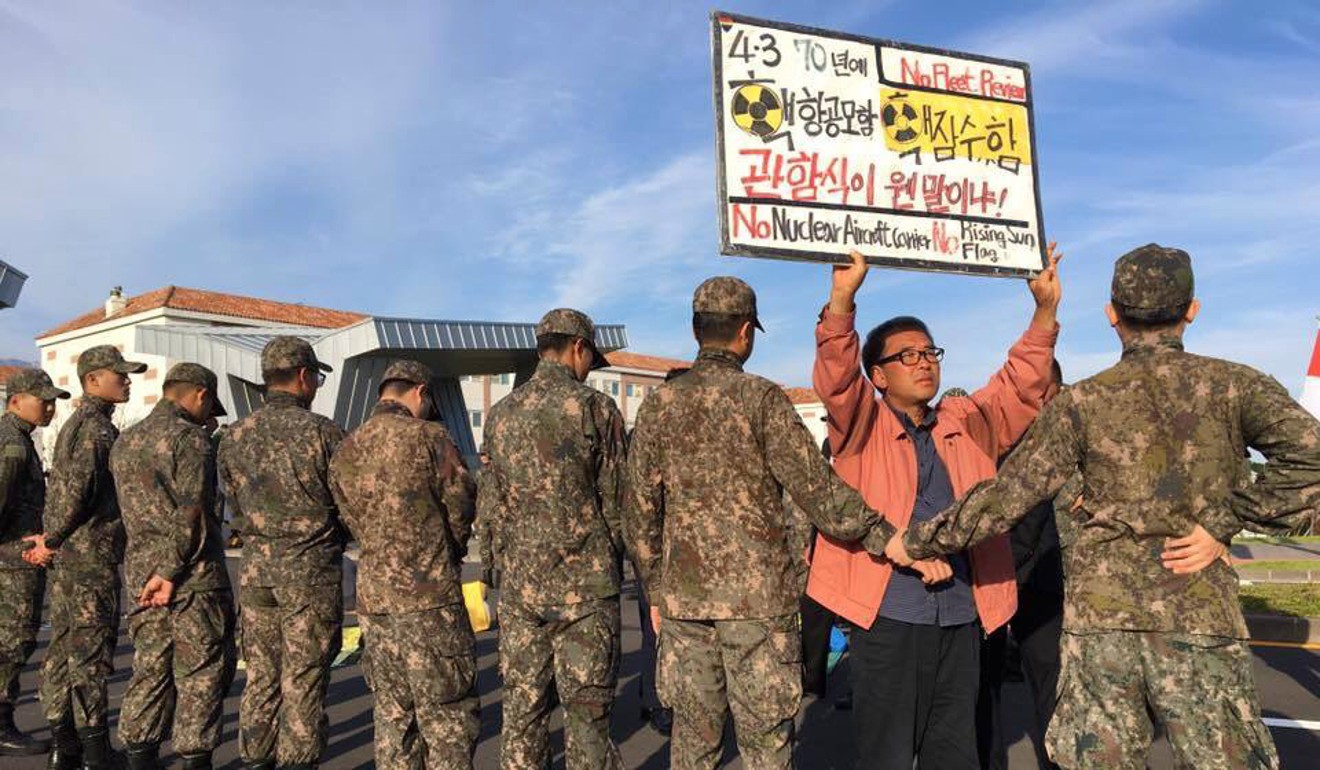
Jeju jittery as US warship visit reminds islanders of dark chapter in South Korea’s history
Villagers want an apology for a post-second world war massacre they blame on Americans and say the reason for a new base on the island is to contain China
Activists on Jeju island, one of South Korea’s most popular tourist destinations are protesting this weekend against an armada of warships from 13 countries, including the USS Ronald Reagan from the United States, describing its visit as an act of colonial hypocrisy.
Jeju, nicknamed the Hawaii of South Korea and attracting 15 million visitors a year, has an anguished past that has given rise to pockets of anti-US sentiment.
The government cracked down on what it saw as a dangerous communist insurgency in 1948 and 1949, killing 30,000 people.
Back then there was a strong American military presence in the country and while there is no evidence US forces were linked to the massacre, locals believe they were and have demanded an apology.

Several years ago, they protested passionately against the building of a naval base at Gangjeong on the island – saying it was only to help the US contain China’s military expansion.
On Thursday, as the international fleet review kicked off, about 60 Jeju residents – many from Gangjeong – armed themselves with signs saying “no warships” and took their kayaks to sea. They blocked the arrival of the USS Ronald Reagan nuclear-powered American aircraft carrier.
Huge show of strength : China’s largest ever naval review
The group, made up of local coalitions and national non-governmental organisations, was able to stop the warship from docking until a day later, when it finally anchored at the port on Friday, according to South Korea’s Munhwa News. The South Korean ministry of defence however, insisted that was the carrier’s plan all along.
Activists said the docking of the nuclear-powered American ship carries a terrible significance for the local population.

“The US military killed Jeju residents back then, this is why we don’t want a naval base [they can use],” said Koh Kwon-il, a local who is a member of the Association of Gangjeong Villagers Against the Jeju Naval Base. “Everyone knows this navy base is was made for the US, even though the government insists it isn’t … We want to hear an apology from the US for the murder of innocents.”
The peace activists said they would continue protesting over the weekend while the fleet review at Jeju Civilian-Military Complex Port is open to the public and was expected to draw local and visiting spectators to see ships from Singapore, India, Australia and Canada.
China, which was going to attend, withdrew on Wednesday citing “internal reasons”.
“I do not know the exact reason China withdrew and I do not expect it will be explained,” said a spokesperson for South Korean presidential office at a press briefing on Thursday.
The fleet review had the theme “Jeju, where peace starts”, a reference to it being declared an “island of world peace” by former president Roh Moo-hyun, despite being an important military outpost.

“The current government calls for peace on the Korean peninsula, and they started dialogue with North Korea which is very positive,” said Gayoon Baek, a peace activist and co-founder of local NGO Jeju Dark Tours.
“But then why do they need such a huge naval base or to reinforce the national defence budget,” she said referring to the naval base which cost US$907 million to build.
Subs, ships and aftersales service: how Russia’s military is making Moscow a player in the Asia-Pacific
“Jeju locals comment sarcastically that the government is building the base to counter China while Chinese investors are buying land in Jeju and Chinese tourists flooding in big numbers,” said Lina Koleilat, a scholar at the Korea Institute at Australian National University who agrees the strategic reasoning behind the Jeju base is to keep China in check.
Ultimately, establishing a navy base on Korea’s island of peace and the paradox of a peace-themed military parade underscores how the word peace is far from neutral in South Korea, says Nan Kim, an associate professor and peace activism expert at the University of Wisconsin Milwaukee.
US Navy re-establishes Atlantic fleet as Russian submarine activity surges
“The peace activists reject any notion of ’peace’ rooted in militarism, and have opposed the ‘remilitarisation’ of Jeju because they argue it dangerously raises the risks of a future disastrous war in the region,” she said.
Locals also do not want to see history repeated, said Koleilat.
“During their colonial occupation of Korea, the Japanese used Jeju to launch their attack on Nanjing in 1938, causing the Nanjing massacre,” she said. “They don’t want to see their island used as a launching pad for more killing and wars.”

